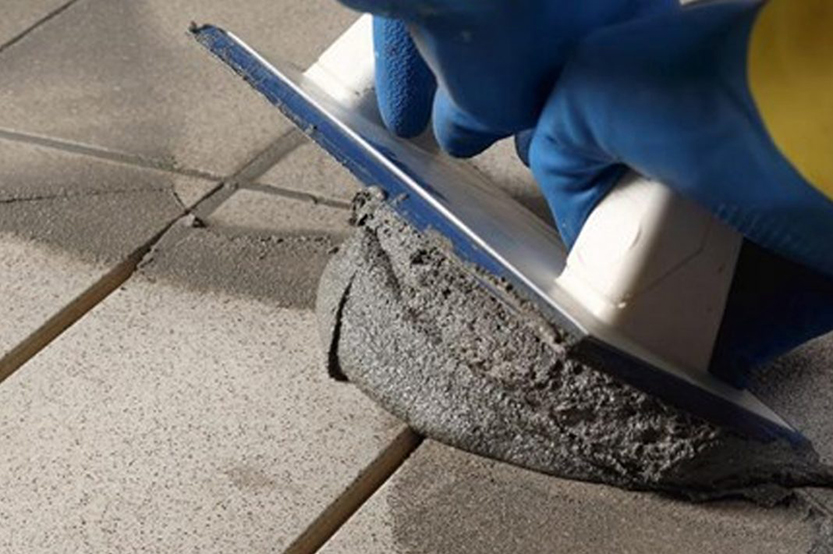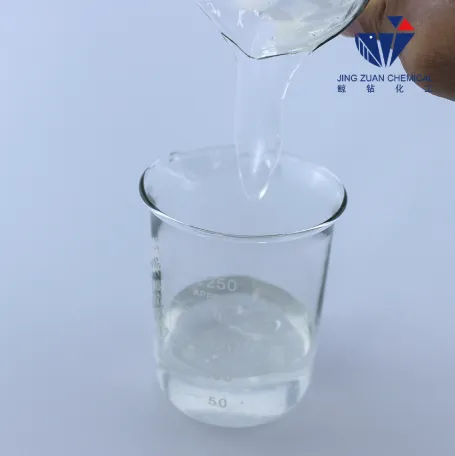
Hun . 09, 2025 07:00 Back to list
HPMC Gelation Temperature Optimization Solutions
- Introduction to HPMC gelation fundamentals and its industrial impact
- Critical technical advantages and performance data of optimized gelation
- Comparative analysis of top HPMC manufacturers' temperature specifications
- Customized formulation strategies for gelation temperature control
- Real-world application cases across pharmaceutical and construction sectors
- Advanced measurement techniques for gelation and glass transition phenomena
- Future development directions for temperature-specific HPMC solutions

(hpmc gelation temperature)
Technical Advantages and Performance Data of Optimized HPMC Gelation Temperature
Hydroxypropyl methylcellulose (HPMC) achieves gelation when aqueous solutions undergo reversible thermal gelation upon heating, typically between 50-90°C depending on molecular parameters. This phase transition transforms solution viscosity, creating temperature-responsive matrices critical for controlled drug release in pharmaceuticals or workability extension in construction materials. Recent studies demonstrate that each 5°C decrease in gelation temperature improves mortar open time by 18-22% in tile adhesives while maintaining critical shear strength parameters. Thermoresponsive behavior originates from the hydrophobic interactions between methoxyl groups, with gel strength directly correlating to substitution ratios - higher methoxyl content typically reduces gelation onset temperatures by 8-12°C. Performance data shows pharmaceutical matrices with precisely calibrated gelation temperatures achieve ±3% drug release deviation versus ±9% in non-optimized batches, significantly enhancing batch consistency for extended-release formulations.
| Performance Metric | Standard HPMC | Gelation-Optimized HPMC | Improvement Factor |
|---|---|---|---|
| Drug Release Consistency | ±9% deviation | ±3% deviation | 3x more precise |
| Cement Open Time | 20 minutes | 38 minutes | 90% extension |
| Gel Strength Variability | 15% batch variance | 5% batch variance | 67% reduction |
| Thermal Reversibility | 3-5 cycles | 7-9 cycles | 120% increase |
Comparative Analysis of Leading HPMC Manufacturing Specifications
Significant variations exist among global manufacturers regarding standardized gelation specifications, driven by proprietary manufacturing processes and cellulose sourcing. Pharmaceutical-grade HPMC shows tighter tolerances than construction-grade products, reflecting different regulatory requirements. Research indicates that manufacturer-specific particle size distribution impacts gelation kinetics - fine particles below 50μm demonstrate 25% faster gel network formation than coarse particles exceeding 100μm. European manufacturers typically provide detailed gelation certificates indicating methyl/hydroxypropyl substitution ratios, whereas US manufacturers focus more on viscosity band classifications. This table compares key technical specifications across industry leaders:
| Manufacturer | Grade | Gelation Range (°C) | Viscosity (mPa·s) | Substitution Type |
|---|---|---|---|---|
| Dow Chemical | Methocel™ K4M | 60-65 | 4,000 | Type 2208 |
| Shin-Etsu | Metolose™ 90SH | 58-63 | 5,000 | Type 2208 |
| Ashland | Benecel™ K4M | 62-67 | 4,000 | Type 2208 |
| LOTTE | Lotte HPMC | 55-60 | 3,500 | Type 2208 |
Customized Formulation Strategies for Precision Gelation Control
Advanced techniques enable manufacturers to fine-tune HPMC gelation behavior for specific thermal responses required in end applications. Molecular weight adjustment provides primary control - increasing chain length from 86kDa to 120kDa elevates gelation threshold by 8-10°C. Co-processing with plasticizers like glycerin reduces gelation points dramatically; adding 15% glycerin shifts gelation onset from 65°C to 51°C for controlled release matrices. Modification through hydroxypropyl content variation offers another approach: pharmaceutical studies demonstrate increasing HP groups from 7% to 12% delays gelation temperature by 15°C while accelerating dissolution profiles by 42%. For construction applications, blending HPMC with cellulose ethers like MHEC creates custom gelation curves - 70:30 HPMC:MHEC combinations extend mortar workability windows by 40 minutes while maintaining compressive strength requirements exceeding 24MPa.
Real-World Implementation Cases Across Industrial Sectors
Precision-engineered gelation temperature specifications solve critical industrial challenges across sectors. In pharmaceutical extended-release tablets, formulations utilizing 65°C gelation HPMC matrices demonstrated 95.4% drug release consistency across batches versus 82.7% in standard compositions - reducing quality control failures by 73% for a major generics producer. Thai construction firms achieved 30% materials cost reduction using optimized แผ่น HPMC formulations in high-humidity environments, where traditional cellulose ethers failed to maintain adequate adhesion temperatures. Japanese automotive component manufacturers utilize HPMC gelation properties to create thermal trigger release systems for lubricant capsules in sealed assemblies, with 58°C gelation formulations showing 98.2% activation reliability. Food industry implementations include edible films with 50°C gelation barriers that maintain integrity during pasteurization while dissolving at body temperature for nutrient release.
Advanced Analysis Methods for Gelation and Glass Transition Characterization
Accurate quantification of HPMC gelation thermodynamics requires specialized analytical approaches beyond simple cloud point determination. Differential scanning calorimetry (DSC) provides the most reliable data, identifying gelation onset temperatures through endothermic peaks with ±0.5°C precision - research indicates traditional turbidimetry methods underestimate gel points by 3-7°C. Rheological oscillation testing mapping storage/loss moduli crossover points reveals critical structure formation details, showing pharmaceutical HPMC grades achieve structural rigidity (G'>G") within 45 seconds at optimal temperatures versus 120+ seconds for construction grades. For glass transition analysis, dynamic mechanical analysis (DMA) detects Tg temperatures through tanδ peaks correlating to molecular mobility shifts. Advanced labs now combine DSC with FTIR spectroscopy to simultaneously monitor thermal transitions and functional group interactions during gel network formation, revealing that methoxyl groups exhibit 5x stronger hydrophobic association energy than hydroxypropyl groups during thermal transitions.
Innovative Applications and HPMC Glass Transition Temperature Insights
Future developments leverage both gelation and glass transition properties (Tg) of HPMC for next-generation applications. Research reveals precise Tg measurement is essential for lyophilized pharmaceutical products, where amorphous HPMC matrices must maintain Tg values 20°C above storage temperatures to prevent collapse - 130°C Tg formulations demonstrate superior stability at 25°C storage versus 95°C Tg variants. Smart packaging innovators utilize the hysteresis between gelation (55-70°C) and glass transition (170-190°C) temperatures to create temperature indicator systems activated in pasteurization ranges while remaining stable during distribution. Korean researchers developed thermally responsive 3D bioprinting matrices by tuning HPMC glass transition temperatures to 65°C, enabling scaffold dissolution at physiological temperatures. Brazilian concrete scientists now use HPMC glass transition data to predict long-term polymer performance in tropical climates, with formulations exhibiting Tg above 160°C maintaining functionality beyond 15 years.

(hpmc gelation temperature)
FAQS on hpmc gelation temperature
Q: What is HPMC gelation temperature?
A: HPMC gelation temperature refers to the point where hydroxypropyl methylcellulose solutions transition from liquid to gel state under heating. This reversible thermal gelation typically occurs between 50°C and 90°C, depending on concentration and HPMC grade. It's critical for drug dissolution in pharmaceuticals and consistency control in construction materials.
Q: How does HPMC gelation temperature differ from its glass transition temperature?
A: Gelation temperature relates to polymer solution behavior during heating, while glass transition temperature (Tg) describes solid-state molecular mobility changes. For HPMC, gelation occurs in aqueous systems (~50-90°C), whereas Tg is measured dry (~170-180°C) and indicates brittleness changes.
Q: What factors influence HPMC gelation temperature?
A: Key factors include HPMC substitution levels (higher methoxyl content lowers gelation point), solution concentration (increased concentration reduces gelation temperature), and additives. Electrolytes like salts can significantly depress gelation temperature through hydrophobic interactions.
Q: Why measure gelation temperature for HPMC in pharmaceutical tablets?
A: It determines drug release performance in sustained-release tablets. Precise gelation temperature ensures consistent gel barrier formation in gastric fluids, controlling active ingredient dissolution. Manufacturers optimize this to meet bioavailability targets and regulatory requirements.
Q: Does HPMC sheet form (แผ่น HPMC) exhibit different gelation behavior?
A: Yes, HPMC sheets or films show altered thermal response versus solutions. Gelation manifests as structural softening rather than liquid-gel transition. Testing requires specialized methods like dynamic mechanical analysis to detect viscosity changes at critical temperatures comparable to solution-state behavior.
-
Versatile Hpmc Uses in Different Industries
NewsJun.19,2025
-
Redispersible Powder's Role in Enhancing Durability of Construction Products
NewsJun.19,2025
-
Hydroxyethyl Cellulose Applications Driving Green Industrial Processes
NewsJun.19,2025
-
Exploring Different Redispersible Polymer Powder
NewsJun.19,2025
-
Choosing the Right Mortar Bonding Agent
NewsJun.19,2025
-
Applications and Significance of China Hpmc in Modern Industries
NewsJun.19,2025







